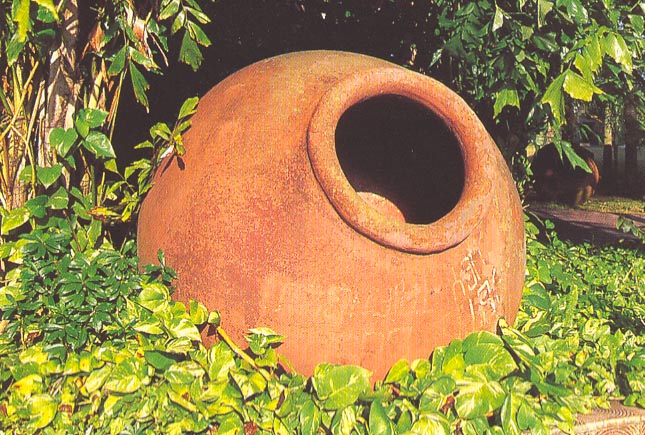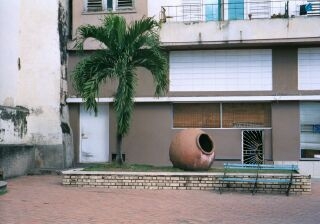

"Wells or cisterns were not abundant; water was contained in beautiful tinajas(...), disposed in the yards, due to its great capacity, 4 or 6 of them might contain the water quantity of a cistern".
This was the description made by Antonio Bachiller y Morales of the typical Tinajones from Camaguey when he visited the city of Santa Maria del Puerto del Principe on 1838. The Tinajon is a perfect symbol for Camaguey. It is the most genuine representation of this place. Camaguey is well-known around the whole world as the "City of Tinajones". The tinajon has its antecendents in the Andalusian vessel. It was the solution with which the potters coming from the south of Spain, transformed the vessels that were originally used to preserve grains, wines, oils and other liquids into water containers.
Although tinajones were massively ellaborated in this region from 18th century, they are not exclusive to Camaguey. They were also made in other places of Cuba -Trinidad and Sancti Spiritus-, the Antilles, Jamaica and even in South America and Peru, where the potter tradition was taken from the Inca civilization. Using the red clay from Sierra de Cubitas, tinajones started to be built in the early 1600s, according to records, although there's no existing tinajon from that earlier date. The most ancient one is around 1760. Its production peaked the highest point in the central decades of 19th century. Since 1868, with the starting of the independentist struggles, it was almost cancelled to be reestablished later on, between 1878 and 1895, and completely ceased some time after. Every home in Camaguey had at least one tinajon.

The water contained within its fresh walls, was used to drink and cook and to make the traditional toast to visitors, relatives and foreigners. Many found wedding here... That's why the oldest people and even the youngsters used to say to the boyfriend in wedding ceremonies and engagements: -He drinks water from the tinajon!. In 1900 there were in the city about 16 thousand tinajones. Today there still remains 2 500 originals. Many of those which are present now in gardens and parks were made after 1976, when this potter tradition was rescued. From one to another century, tinajones were varying in form. It essentially kept its classic model present until our days. The typical tinajon from Camaguey is that of huge belly, geometric sharp figures and wavy crest. It is said that they were an excellent place to hide for donjuanes who were surprised in the middle of romances in alien lands... According to a legend, in 1875, a mambi soldier was visiting his sick child in the city, near of the historical San Juan de Dios Square. He was betrayed and was able to escape from the Spanish soldiers who were chasing at him, by remaining hidden in one of these tinajones. The imagination of thousands artisans played with the soft clay in different ornamental objects. The master potters set forth the basis of the current ceramic in Camaguey. And together with this new generation, in the typical yards of Camaguey, transpiring the humidity of centuries, among arecas, flowers and ferns are still watching the time, the fat and bellied tinajones.
Taken from the site of culture in Camaguey. May 2003.
